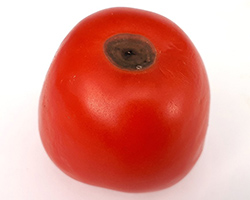Nanobots in humans and plants
From machines that build cars, to robotic animals, the world is slowly being populated with robots. These large, or macro, robots have complex functions that allow them to do different things. As of 2015, researchers have been able to spontaneously assemble a nanoscopic Voltron. This means they introduced the parts of the robot (molecules) together and the robot built itself

However, the nanorobots lacked complex functions, so they weren’t very useful. But researchers are making a lot of progress in developing nanorobots that can respond to their environment, and that can be made to have a very specific target. As a result, fields such as medicine and agriculture will greatly benefit from the use of nanorobots.
In the field of medicine, nanobiotechnology has been used in many ways. For example, nanostructures can be used to deliver drugs just to cancer cells. Cancer cells create an acidic environment, which can cause nanostructures to change shape. Scientists have developed nanomachines that only shape-shift when in contact with a cancer cell. The shape-shifting of these carriers allows the drug to be delivered selectively. Scientists are developing more complex and efficient nanostructures for such uses.

Bionanotechnology has not only affected the field of medicine, but also the field of agriculture. Nanostructures are being used to try to make more efficient farming technologies. For example, nanostructures have been used to deliver nutrients to certain tissues in tomato plants. Nanoparticles can get into the leaves of the cell and release the nutrients. This helps fight plant diseases more successfully than with regular fertilizers. Such technologies may help us reduce the impact of farming on the environment. It could also help us create more food for the growing global population.
The problems in modern society continue to challenge researchers to innovate. In bionanotechnology, researchers have stepped up to the challenge. They have and will continue to design smart approaches to solve these problems, using the tools of self-assembly.
Swiss chard seedlings image by Lufa Farms. Additional images via Wikimedia Commons.
Read more about: Nanobiotechnology: Nature's Tiny Machines
Bibliographic details:
- Article: Nanobots in Humans and Plants
- Author(s): Dr. Biology
- Publisher: Arizona State University School of Life Sciences Ask A Biologist
- Site name: ASU - Ask A Biologist
- Date published: 4 Feb, 2020
- Date accessed: 21 May, 2025
- Link: https://askabiologist.asu.edu/nanobots
APA Style
Dr. Biology. (Tue, 02/04/2020 - 16:28). Nanobots in Humans and Plants. ASU - Ask A Biologist. Retrieved from https://askabiologist.asu.edu/nanobots
Chicago Manual of Style
Dr. Biology. "Nanobots in Humans and Plants". ASU - Ask A Biologist. 04 Feb 2020. https://askabiologist.asu.edu/nanobots
MLA 2017 Style
Dr. Biology. "Nanobots in Humans and Plants". ASU - Ask A Biologist. 04 Feb 2020. ASU - Ask A Biologist, Web. https://askabiologist.asu.edu/nanobots

Be Part of
Ask A Biologist
By volunteering, or simply sending us feedback on the site. Scientists, teachers, writers, illustrators, and translators are all important to the program. If you are interested in helping with the website we have a Volunteers page to get the process started.



